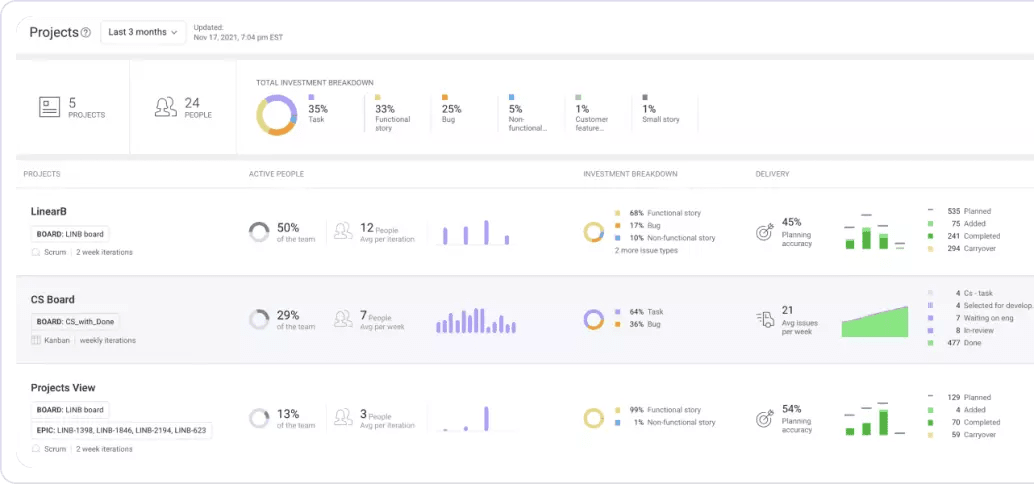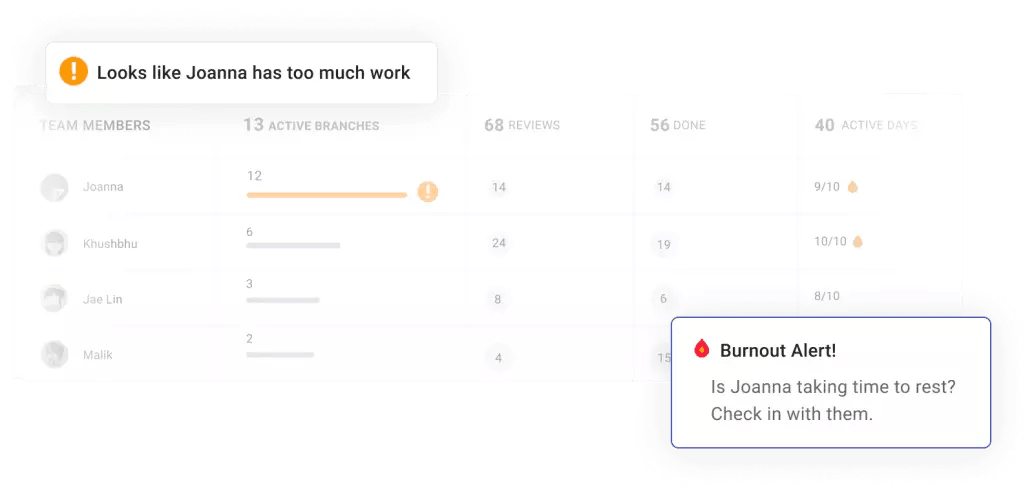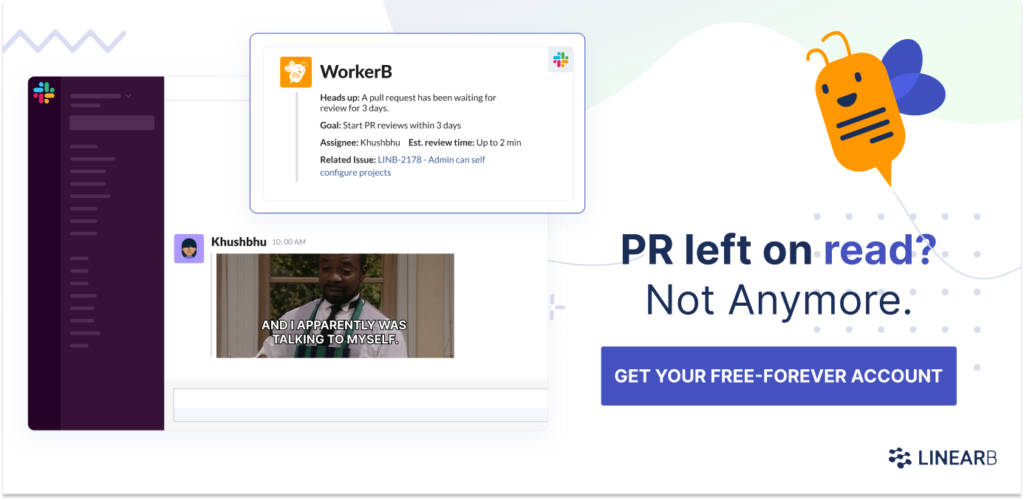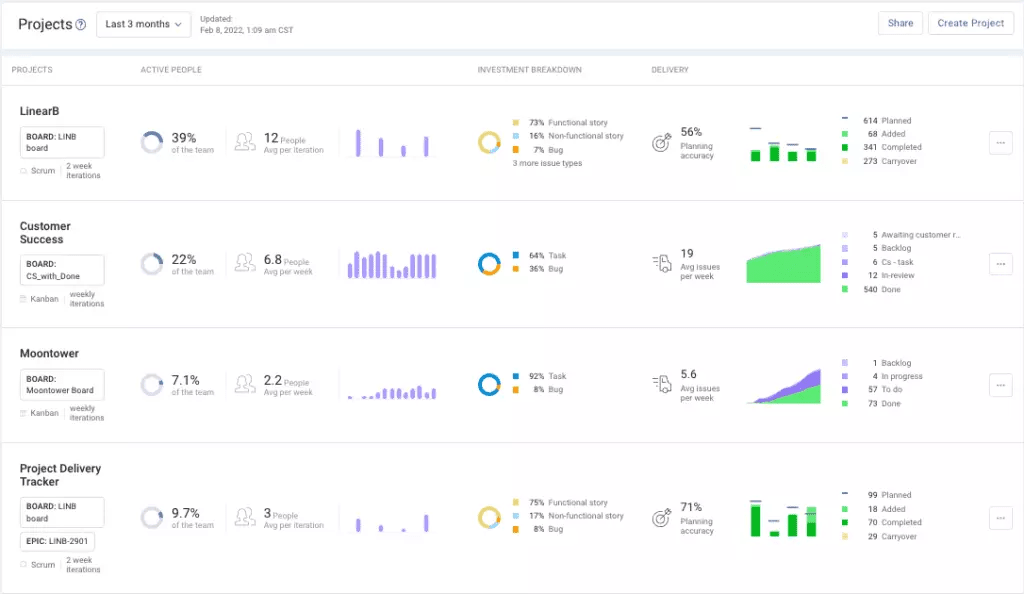Sprint planning is one of the most critical but overlooked parts of agile development. This step is important because it helps product managers prioritize upcoming sprints and communicate expectations with team members, keeping everyone aligned and on the same page. However, if you don’t plan accordingly, sprints can easily go awry.
Read on for some best practices to consider before engaging in sprint planning and agile development to increase the chances that your projects stay on track.
Table of Contents
What Is Sprint Planning?
Sprint planning is a strategizing session that takes place before an agile sprint begins. Here’s a general breakdown of what occurs during a typical sprint planning session.
Review the Previous Sprints
Reviewing previous sprints allows you to see what went well and where you can improve so that you continuously refine your sprint process. Tools like Jira can show you how many story points you completed. But this is like the manager of a sports team only knowing the scores of the previous games but not having access to any other stats.
You need a more granular understanding of your team’s performance, and this is exactly what LinearB provides. You can see detailed breakdowns of things like cycle time, how each of your reports spent their work time, and how your team’s development time was invested.

Assess the Backlog
Typically, the same person is the product owner and Scrum Master (or what is now called the Scrum Coordinator). You will want to call a meeting with the relevant product manager or managers and perhaps the Scrum team as a whole to look over your product backlog items and select which ones you want to move onto the sprint backlog and complete during that sprint. It is also a good idea to also look over the related user stories so that you can make sure you are solving the right user problems.
Backlog refinement is a core piece of agile methodology. It is how you ensure that each sprint is creating maximum value for the company. It also enables you to see whether what is being asked of your development team is in accordance with the resources available to you.
Describe the Mission
The sprint planning session should outline the basic objectives of the upcoming sprint. You need to define acceptance criteria so that your team knows exactly what is being asked of them. You should also make clear to the team the main sprint goal and how it fits into the application as a whole. This big picture perspective is one of the three pillars of a sustainable engineering process, according to Twitter’s VP of Engineering, Maria Gutierrez.
Identifying Resources
Before you begin a sprint, you should have a clear understanding of the resources that are available to you and your team members. Resources fall into several categories – people, infrastructure, tools, and capital – which makes it difficult to get an accurate assessment.
The most important category, people resources, also happens to be the most difficult to measure. Many people are reluctant to say, “I’m too busy to take that on,” for fear of appearing like an under-performer. LinearB allows you to see, quantitatively, how much work each of your reports has taken on, as well to see how well they executed on the work assigned to them in previous sprints. Insights like this take the guesswork out of resource allocation during the spring planning process.
Outlining Priorities
During the sprint planning session, it’s critical to set goals and to use those goals to prioritize the features that you want to develop in the upcoming sprint. The sprint shouldn’t begin until your team agrees on what it should work on and how it will improve the overall product. If people are butting heads, it’ll be that much harder to achieve sprint objectives.
Assigning Roles
It’s also necessary to assign roles for the upcoming sprint. During the planning session, you should think about who will be working on the project. At this point, assess each team member’s strengths and weaknesses. You’ll also want to make sure that everyone is comfortable with their roles before moving forward.
Answering Questions
Now is the time to take questions and make sure your team feels good about the upcoming sprint. Sprints can move very quickly, so it’s important to align your team before the project moves into development.
Setting a Time Frame
Lastly, you should set a clear timetable for a sprint. Decide if it will be a single day, a few days, a week, or longer. Starting a sprint without a clear timetable is a recipe for disaster and will almost always lead to longer delivery times.
Best Practices for Sprint Planning
If you’re new to it, sprint planning may seem like a hassle. But it’s one of the most important things you can do for ensuring a smooth and effective workflow. Keep the following best practices in mind when engaging in sprint planning to reduce bottlenecks and aggravation and get the most out of your sprints.
Don’t Rush Through Sprint Planning
Let’s face it: Most developers detest meetings and would rather spend their time producing and building products than talking about them. As a result, product managers often rush through sprint planning so they can keep engineers happy and software pipelines moving.
But sprint planning is not something you want to rush through or circumvent. Brushing over the process can lead to bottlenecks, resource constraints, and miscommunication. This can slow down sprints and lead to costly rework.
By creating a bit of ceremony, you can turn the backlog grooming process into a thing people look forward to. Celebrate what you achieved in the last sprint before launching into planning the next one. This will make your team feel appreciated and motivate them to continue doing great work.
By taking your time and putting in the initial effort, you can improve your chances of having an efficient and successful sprint.

Assign Roles Carefully
Agile sprints don’t happen automatically. If you want to have a successful sprint, you need to have a team of developers on hand who have the experience and availability necessary to complete feature builds.
As such, it’s a good idea to think carefully when assigning roles for an upcoming sprint. Also, keep in mind that some developers may take on more work than they have room for in an effort to be accommodating or because they want to have a hand in a particular feature or project. It’s crucial to have a clear understanding of the amount of work each of your reports has taken on so that you don’t wind up overwhelming them and causing burnout.

Visualize Workflows
Oftentimes, there’s a big disconnect between how you imagine a workflow and what it actually entails. Far too often, teams encounter bottlenecks when workflows take longer than they anticipate.
It’s possible to reduce friction by visualizing workflows and identifying potential obstacles before they occur. This can allow you to make adjustments or request additional resources before the sprint begins to avoid potential issues and keep sprints moving forward.
Question Priorities
Sprint planning is a time for asking questions and challenging ideas. While you may see something as a high priority, other stakeholders may think otherwise.
For the best results, approach sprint planning with an open mind and put all your options on the table. Then decide as a group what makes the most sense given your application, resources, and customer needs.
Have a Preplanning Meeting
It can help to have a preplanning meeting before your sprint planning session. By doing so, you can discover potential conflicts or barriers in advance. This can save time and reduce frustration.
Enable Autonomy
Most developers want to work in an environment with a high level of autonomy. Micromanaging them during development can create barriers and slow down sprints. And if it happens repeatedly, developers may leave for work environments that are easier and friendlier.
As such, you should iron out all the details in the sprint planning session so that you can get out of everyone’s way during production. The better your sprint planning session is, the easier it will be to take a hands-off approach and trust team members to execute tasks.
One thing that creates friction in a team is when a manager has to ping a report about work that it appears they have forgotten about. It makes the employee feel like they are being watched and that they have been “caught.” It makes the manager feel like they are micromanaging.
Automated alerts solve this problem and give the manager back valuable time. If someone forgets about a pull request they need to review – which happens more than we developers would care to admit – LinearB’s WorkerB bot will remind them. This is just one of many automations that WorkerB can perform that will speed up your team’s cycle time and boost the quality of the code that the team ship.

Have One Person Take Ownership of the Meeting
Without a project leader, sprint planning can be like herding cats, especially for large teams with multiple projects.
To avoid confusion, have one person take ownership and organize each sprint planning meeting. You can rotate the project leader from sprint to sprint. But it definitely helps to have a single person overseeing each session.
Document Everything
During a typical sprint planning session, your team will discuss a lot of information. It’s very common for ideas and objectives to get lost during a planning session or for team members to walk away unsure about the next steps.
To prevent miscommunication, have someone take meeting minutes and produce a list of notes and action items to share with the group. A common understanding of what the team is working toward greatly fosters team collaboration. Store these notes and revisit them before your next sprint planning session.
Create Data-Driven Product Delivery Reports
Sprints often fail because product leaders lack the right data and insights. This lack of visibility can also create risk and lead to delivery delays and disruptions.
A project delivery tracker collates data from your development sprints so that you have the data you need to outline where issues tend to occur during software production and give you the insights you need to make changes to improve sprint velocity.

What’s more, this type of data can also help you determine project delivery timelines and communicate more effectively with executives, product teams, and customers.
Achieve Successful Sprints With LinearB
LinearB can provide the visibility your team needs to streamline sprint planning and improve productivity and output. With LinearB, you can eliminate guesswork and move away from manual, time-consuming sprint planning tools with a platform that can also serve as a one-stop shop for engineering management and delivery.
Ready to see what sprint planning should feel like? Experience LinearB for yourself by jumping into our demo environment today.



